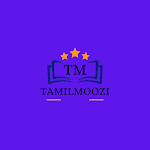•Liberalization, Privatization
and Globalization (LPG)
have become a much
talked of subjects among
politicians, economists and
businessmen in modern
days.
Globalization
•Globalization is the
integration of a country
with the world
economy.
• Basically, globalization
signifies a process of
internationalization
plus liberalization.
Proto Globalization
• The next phase is known as proto - globalization.
• It was charterized by the rise of maritime European empires, in the 16th
and 17th centuries, first the Portugues and Spanish Empires, and Dutch
and British empires.
• In the 17th century, globalization became private business phenomenon
like British East India Company[founded in 1600] described as the first
multinational company, and the first Dutch East India Company [found in
1602] were established.
Modern Globalization
• The 19th century witnessed the advent of globalization approaching
its modern form. Between the globalization in the 19th and in the
20th century there are significant differences.
• There are two main points one is the global trade in his centuries as
well as the capital, investment and the economy and another one is
the global trade in the 20th century shows a higher share of trade in
merchant production, a growth of the trade in services and the rise
of production and trade by multinational firms.
• The Portuguese under the leadership of
Vasco da Gama landed at Calicut on May,
1498.
• Profits of goods brought by Vasco do
Gama to Portugal were to 60 times cost
of the entire expedition to India.
• The second trip of Vasco da Gama in 1502
led to the establishment of trading
station at Calicut Cochin and Cannanore.
• Cochin was the early capital of the
Portuguese in India
• Dutch undertook several voyages from 1596
and formed the Dutch East India company
(VOC) I 1602.
• In 1605, Admiral van der Hagen established
Dutch Factory at Masulipatnam and Pettapoli
(Nizamapatanam), Devanampatinam.
• In 1610, upon negotiating with the king of
Chandragiri, found another facatory at Pulicut.
• Other commodities exported by the Dutch
were indigo, and Bengal raw silk.
• Pulicut was the headquarters of the Dutch in
India.







0 கருத்துகள்